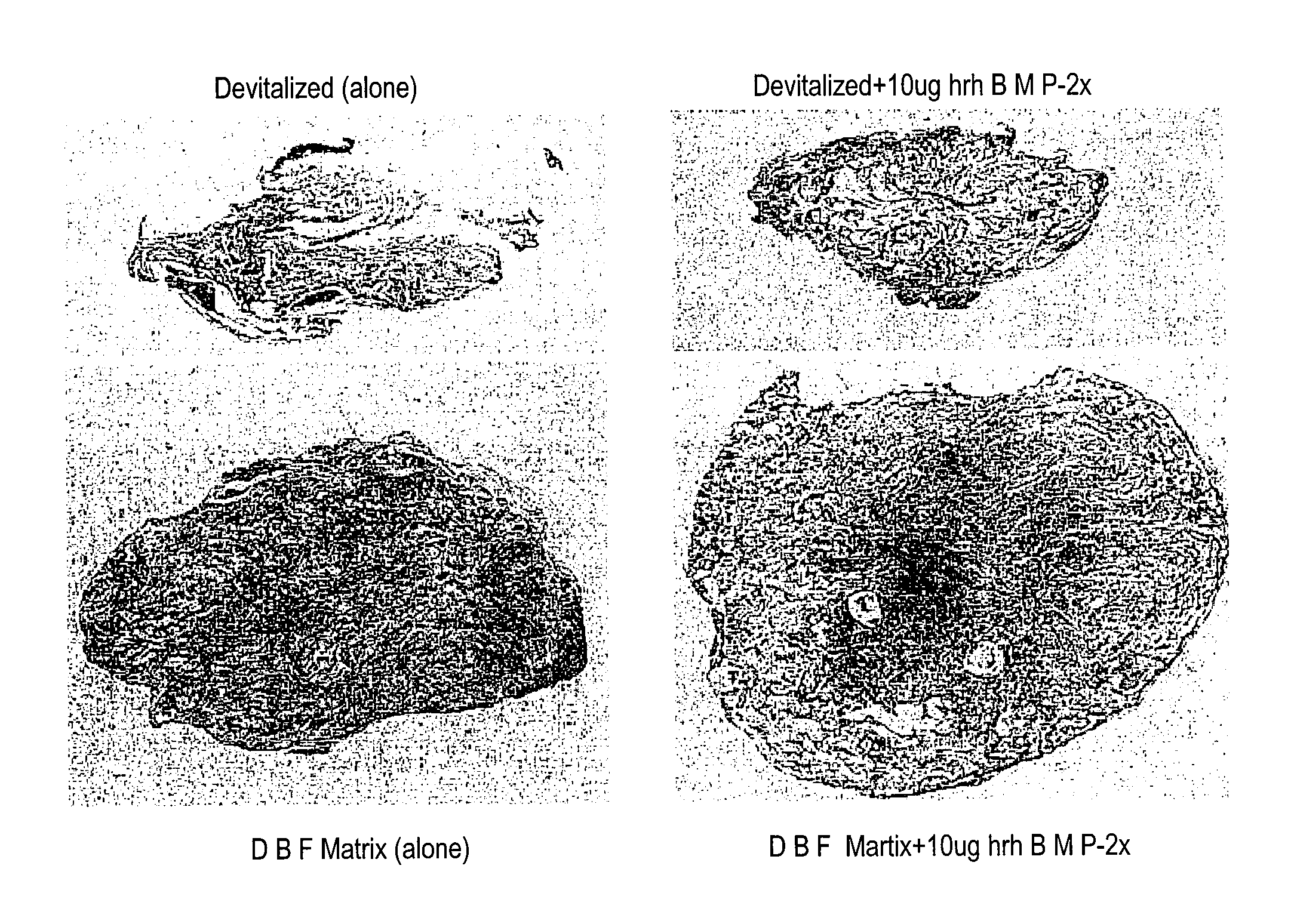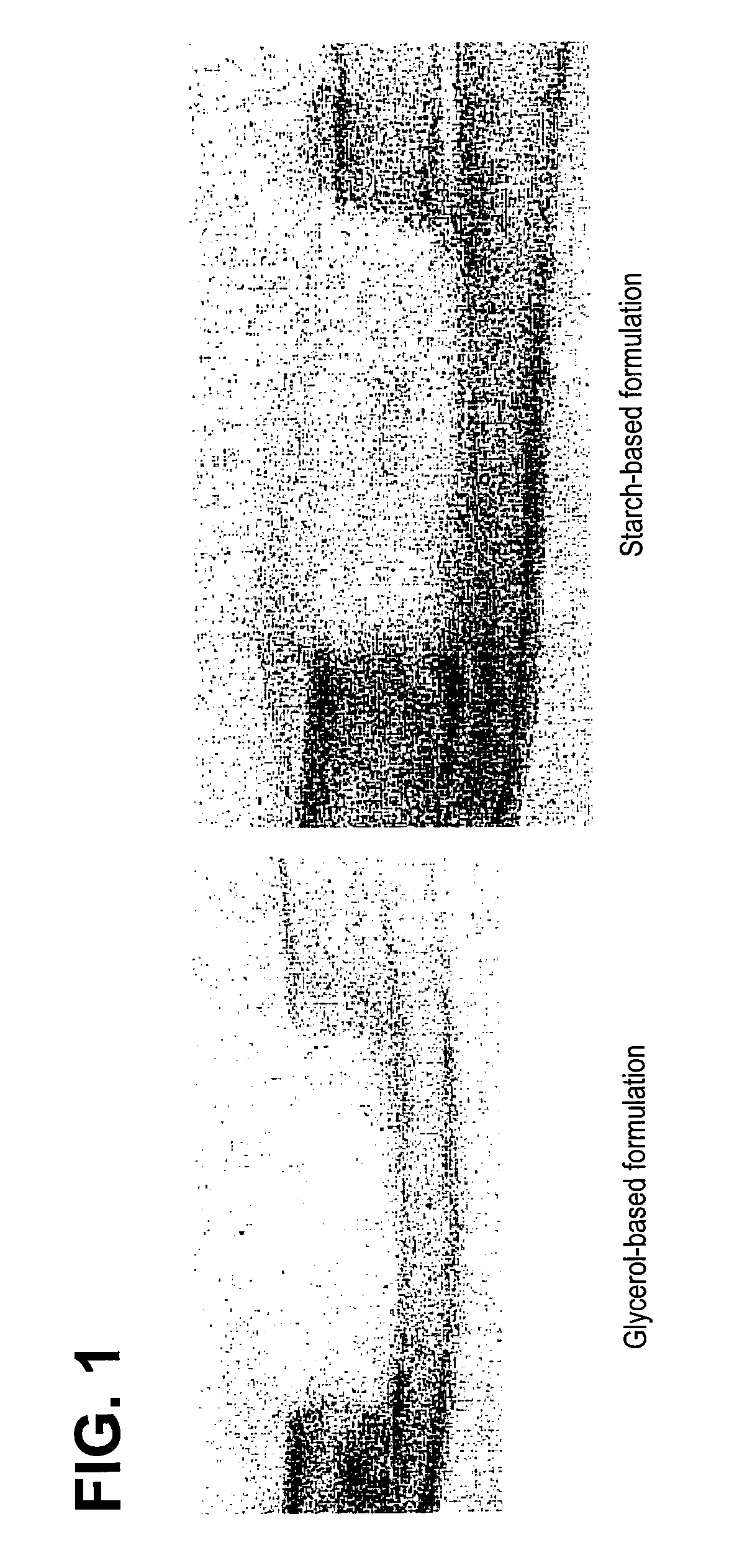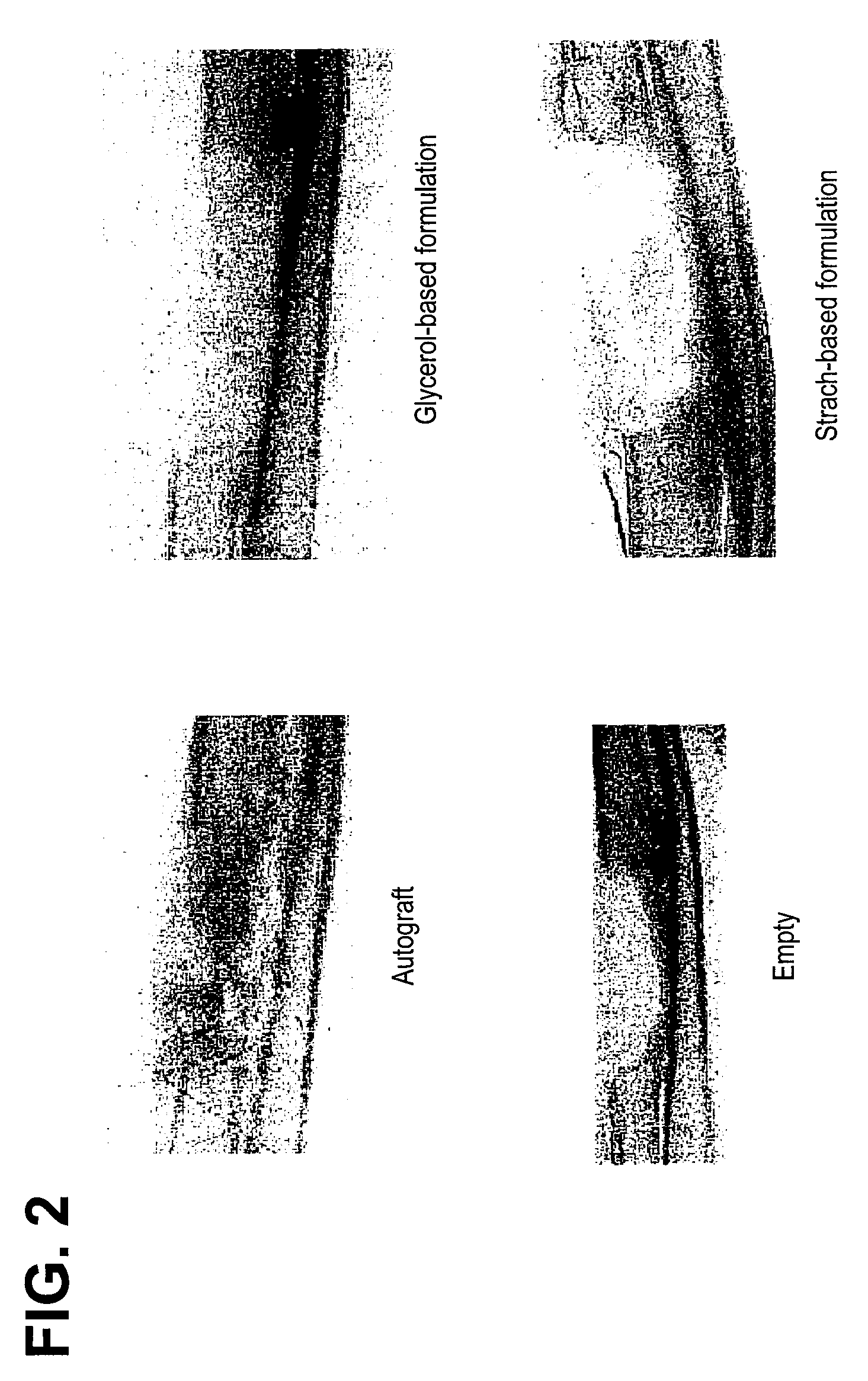Bone Graft
a bone graft and bone graft technology, applied in the field of bone grafts, can solve the problems of demineralized bone matrix, limited abg amount, 5% surgical morbidity, etc., and achieve the effect of reducing activation of osteoinductive agents, reducing osteoinductive capacity, and improving shape-retaining characteristics
- Summary
- Abstract
- Description
- Claims
- Application Information
AI Technical Summary
Benefits of technology
Problems solved by technology
Method used
Image
Examples
example 1
Preparing Demineralized Bone Matrix (DBM)
[0092]DBM may be prepared using any method or technique known in the art (see Russell et al. Orthopedics 22(5):524-531, May 1999; incorporated herein by reference). The following is an exemplary procedure for preparing demineralized bone derived from Glowacki et al. “Demineralized Bone Implants” Clinics in Plastic Surgery 12(2):233-241, April 1985, which is incorporated herein by reference. Bones or bone fragments from donors are cleaned to remove any adherent periosteum, muscle, connective tissue, tendons, ligaments, and cartilage. Cancellous bone may be separated from dense cortical bone and processed as large pieces. Cortical bone may be cut into small pieces to improve the efficiency of subsequent washes and extractions. Denser bone from larger animals may need to be frozen and hammered in order to produce chips less than 1 cm. The resulting pieces of bone are thoroughly washed with cold, deionized water to remove marrow and soft tissue.
[...
example 2
Another Method of Preparing DBM
[0097]DBM may be prepared using any method or techniques known in the art (See Russell et al. Orthopedics 22(5):524-531, May 1999; incorporated herein by reference).
[0098]Demineralized bone matrix was prepared from long bones. The diaphyseal region was cleaned of any adhering soft tissue and then ground in a mill. Ground material was sieved to yield a powder with particles approximately 100 .mu.m to 500 .mu.m in diameter. The particulate bone was demineralized to less than about 1% (by weight) residual calcium using a solution of Triton X-100 (Sigma Chemical Company, St Louis, Mo.) and 0.6N HCl at room temperature followed by a solution of fresh 0.6N HCl. The powder material was rinsed with deionized water until the pH was greater than 4.0. It then was soaked in 70% ethanol and freeze-dried to less than 5% residual moisture.
example 3
Formulating Preferred Inventive DBM Compositions
[0099]The carrier was prepared by mixing approximately 6.5% (w / w) of the modified starch, B980, with approximately 30% (w / w) maltodextrin (M180) and approximately 63.5% (w / w) sterile, deionized water. The mixture was heated to 70 .degree. C. to pre-gelatinize. The pre-gelatinized mixture was then transferred into a steam autoclave and sterilized / gelatinized at 124 .degree. C. for 2 hours. The resulting mixture then had a consistency of pudding. The cooled carrier mixture was then combined with DBM (from Example 2) and water, in a ratio of approximately 27:14:9, respectively. The stabilized DBM was then implanted into athymic rats to assess osteoinductivity.
[0100]Alternative embodiments: Other components such as glycerol were added as a solution (approximately 20% w / v) in water instead of water at the time of pre-gelatinization or during the final composition mixing and were found to have acceptable handling characteristics.
PUM
| Property | Measurement | Unit |
|---|---|---|
| size | aaaaa | aaaaa |
| size | aaaaa | aaaaa |
| size | aaaaa | aaaaa |
Abstract
Description
Claims
Application Information
 Login to View More
Login to View More - R&D
- Intellectual Property
- Life Sciences
- Materials
- Tech Scout
- Unparalleled Data Quality
- Higher Quality Content
- 60% Fewer Hallucinations
Browse by: Latest US Patents, China's latest patents, Technical Efficacy Thesaurus, Application Domain, Technology Topic, Popular Technical Reports.
© 2025 PatSnap. All rights reserved.Legal|Privacy policy|Modern Slavery Act Transparency Statement|Sitemap|About US| Contact US: help@patsnap.com



